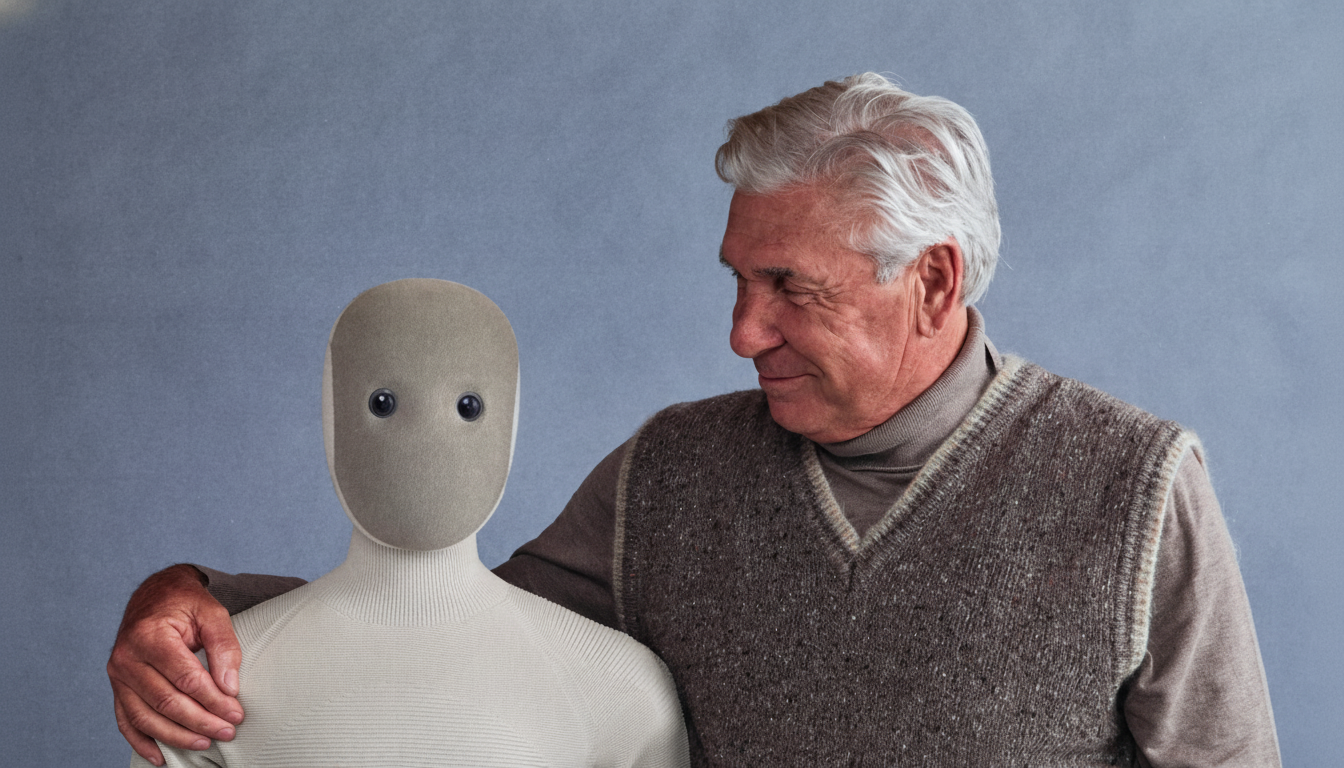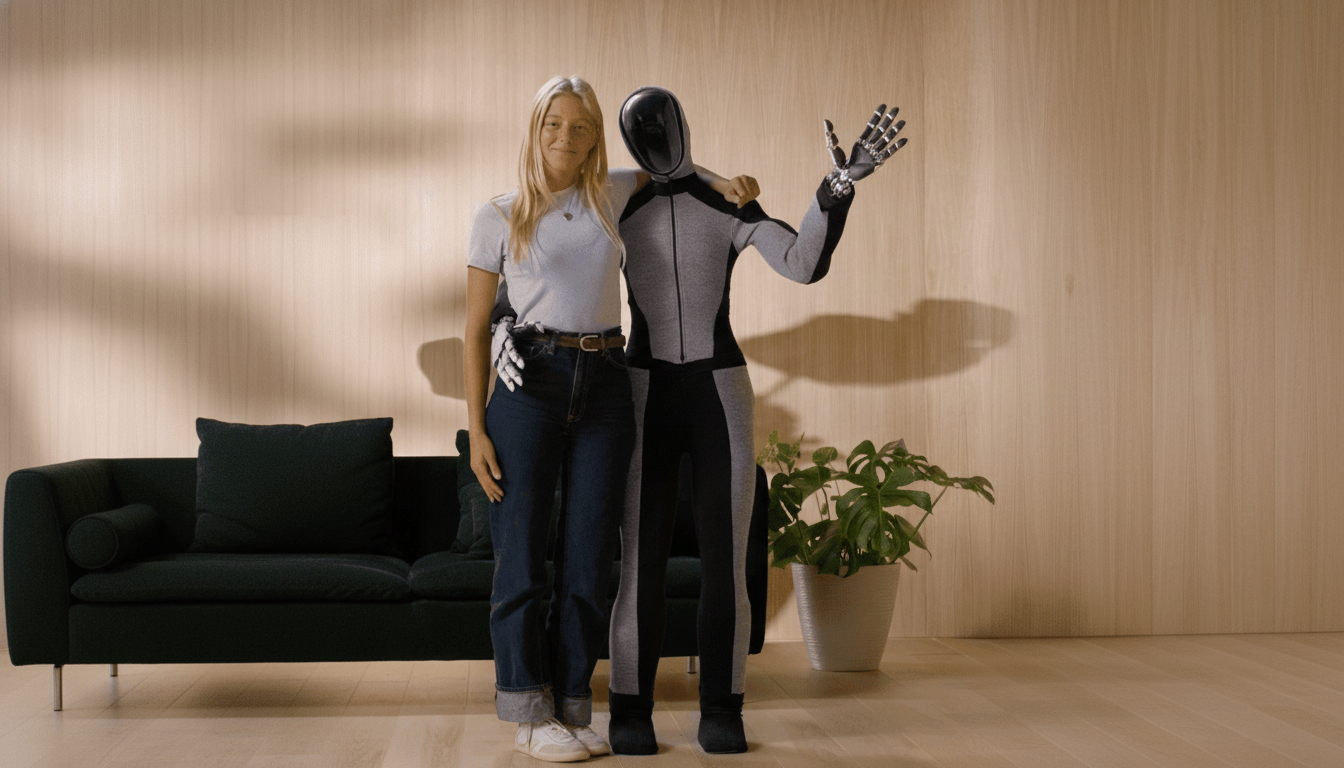Robots with human-like physical and mental capabilities have long been the stuff of science fiction, but research endeavors are taking us a step closer to making them real. 1X has begun taking preorders for NEO, a consumer-level household robot that it bills as the first of its kind available for the average Joe. The pitch is straightforward: a life-size helper that can clean up, carry things around and learn to do new chores over time — if you don’t mind paying early-adopter prices.
What NEO Is and What It Can Do in Your Home
NEO is around 5’6″ (168 cm) and weighs approximately 66 lb (30 kg). Its wrapping is a gentle 3D lattice polymer that comes in Tan, Gray or Dark Brown, removing the industrial feel for something more in place inside a hallway rather than a warehouse. Connectivity comprises Wi‑Fi, Bluetooth and 5G; built-in speakers turn the robot into an unusual portable sound system when the bot is off chore duty.
- What NEO Is and What It Can Do in Your Home
- How to Preorder NEO and Choose the Right Option
- Price and Lease Options for Early NEO Adopters
- How the Day-to-Day Operation and Training Works
- Early Performance and Limits Shown in Demos
- How NEO Compares to Other Emerging Humanoids
- Should You Be an Early Adopter of 1X’s NEO?

1X says NEO will also answer to voice commands and is controlled directly from your mobile via a mobile app. The company says it can lift more than 150 pounds (68 kilograms) and carry up to 55 pounds (25 kilograms), but is designed for household chores on solid ground. The hands are waterproof, but the body is not — so think towels, not dishwater. It has a battery life of approximately four hours per charge.
How to Preorder NEO and Choose the Right Option
Preorders are open now through 1X directly. Reining in a unit for yourself requires you to make a $200 down payment at checkout. Buyers can select between an outright purchase or a lease, choose a colorway and complete details via the company’s ordering flow.
Deliveries are expected to start first in the U.S., before more widely becoming available internationally. 1X suggests even more markets will either immediately follow or soon afterward.
Price and Lease Options for Early NEO Adopters
Early adopters have two options: purchase a NEO for $20,000, or rent it at $499 per month on a minimum six‑month term. The leasing option will allow households to try the robot and return it when their subscription expires, which could hook users who are otherwise intrigued by humanoids but hesitant to make a long-term commitment.
The sticker price puts it in the same league as high-end appliances and home renovations, but that’s sliding‑scale science fiction: cutting-edge mechanics, novel materials and ongoing software development crammed into a first-generation consumer product.
How the Day-to-Day Operation and Training Works
NEO is not fully autonomous. In demonstrations cited by The Wall Street Journal, the robot works best on structured tasks and may need human assistance with unfamiliar chores. 1X provides a programmed teleoperation feature: a staff member can, with the owner’s consent, link in via a VR system to direct NEO remotely during its scheduled workouts and help teach the program new routines over multiple sessions.
For privacy and consent, 1X also says that remote operation requires the owner’s approval, stating that light rings around NEO’s “ears” change color to indicate when a human pilot is at the controls. Human-in-the-loop design like this is something we’ve seen a lot in robotics at early-stage experiments—and IEEE Spectrum and others have been writing extensively about teleoperation as the transition stage between robots that are effective mostly because they’re getting their data into good shape and those that really can act on their own.

Early Performance and Limits Shown in Demos
In media demonstrations witnessed by The Wall Street Journal, NEO could fold laundry and clean up a room, though not quickly — folding one shirt is said to take a couple of minutes — and balance can still be thrown off by less fluid moves, like shutting down a dishwasher. No cooking, for now. Those constraints are in line with the overall status of humanoids: remarkably capable at a range of tasks, but slower and clumsier than an experienced person.
Owners may need to take home readiness into consideration, too. NEO is made for solid, dry ground. Avoid damp surroundings, keep clutter in check to avoid tripping and expect access to charging when going for longer sessions.
How NEO Compares to Other Emerging Humanoids
1X earlier built EVE, a wheeled system targeted for warehouses, under the company’s former name Halodi Robotics. NEO brings to the stage home life aspects which are plain and simple to understand, based on a whole-body biped form factor with a consumer sales model.
Several competitors are sprinting toward the same goals. Tesla is tweaking its Optimus prototype, and XPENG has unveiled a human-like Iron for on-site factory help soon; mass production is slated in the next few years. Unlike those, 1X is already available for preorder, putting NEO in the position to be a leading consumer face in the category out of the gate.
Should You Be an Early Adopter of 1X’s NEO?
If you’re early‑adopting and willing to compromise for version one—slower task execution, occasional need for remote guidance and a price point that’s not consumer-friendly—NEO offers an actual at‑home taste of humanoid help. For any household expecting a sci‑fi butler, adjust expectations: it’s a patient assistant for repetitive chores, not an independent chef.
Bottom line: The NEO represents a tangible stride for consumer robotics.
Preorders are open, the roadmap is favorable to U.S. customers first, and the company’s blended autonomy and teleoperation strategy shows how far the field has come. If you take the plunge, consider it as you would any major appliance purchase: Consider your space, routine and how comfortable you are with a robot that will learn in lockstep with what you want.

